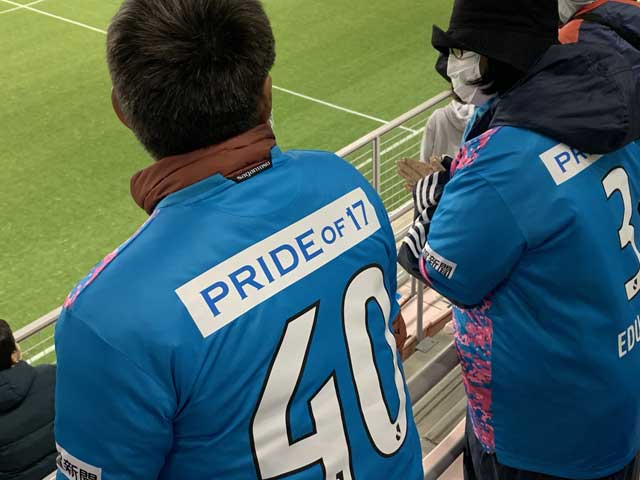J-League Talent Production Line
It's becoming somewhat of a ritual, as a new transfer window opens the latest young talent to come off the J.League production line make the now inevitable move to Europe.
The list is almost endless, but with the growing stature of Japanese players in Europe, and the growing desire for players to move abroad, it does create its own issues.
When to go? Where to go? For what price? They are questions fans in Australia have been asking for many years and now, increasingly, are the Japanese.
For every Shinji Kagawa, Keisuke Honda or Yuto Nagatomo there is a Kisho Yano, Genki Omae or Tomoaki Makino. That's not to say they're bad players, they're not, but they have all found themselves back in Japan after short, ill-fated moves abroad. Did they go too soon? Were they not prepared for the cultural shock, both on and off the training pitch?
That is what each player has to factor in when making the decision to move. The latest to make the move is young Kashima Antlers starlet Yuya Osaka, who has moved to 2.Bundesliga side 1860 Munchen.
Has he moved to the right club? Will he be assured of playing time? Do they play the right football to suit his game and allow him to develop? Is moving to a second division club with little chance of promotion this season the best move?
They are questions that will be answered in time. With a possible World Cup berth on the horizon, he is obviously confident it is the right move at this stage of his career, and hopefully it is for his and Japan's sake.
Not only will he have to adjust to a new country and lifestyle, he has to adapt to the cut throat world of European football, where every player is fighting for survival and his place in the side. You have to impress. It's kill or be killed, so to speak.
While the players have plenty to consider, the other side of the equation is that of the club. How strongly do they hold their ground looking for the right price?
 |
| Between The Lines: Navigating The World Of Japanese Football by Sean Carroll |
For too long clubs wilted to the demands of overseas clubs, allowing their players to leave for nothing, or for a token amount, to do 'what's best for Japan'.
But there are signs, pleasing sings, that practice is changing. After allowing Shinji Kagawa to depart for Dortmund for a pittance (just over €300,000), Cerezo Osaka has since found their negotiating skills, getting €800,000 from FC Nurnberg for Hiroshi Kiyotake, while Cardiff City handed over close to €3,000,000 for Korea's Kim Bo-kyung.
The latest off their production line is the highly talented and sought after Yoichiro Kakitani. The 24-year-old netted 21 times last season and starred for Japan at the East Asian Cup in July, scoring twice in the final match against Korea to seal the title for Japan.
Just recently Cerezo announced they had re-signed Kakitani, meaning that when he inevitably moves to Europe, most likely in the European summer after the World Cup, they will be able to cash in and extract a more substantial transfer fee.
It's what Yokohama F.Marinos did last season when they signed young gun Yuji Ono to a long-term deal, only to sell him to Belgian side Standard Liege a few months later for €1,500,000. Just recently F.Marinos did the same with their latest young star, Manabu Saito, signing him up to a new deal ensuring that they will again get a substantial fee when he moves. Like Kakitani, that will likely be in the European summer.
With players increasingly wanting to move to Europe, clubs need to start looking after their own interests and sign promising young players to long-term contracts in order to cash in when European clubs inevitably come calling. While in the past releasing a player for nothing might have been considered 'doing the right thing', it is actually to the detriment of Japanese football.
Not only does it deny clubs a valuable income stream, it gives the message that J.League clubs are there to be pillaged by European clubs. If clubs think they can get a bargain they will come in droves and before you know it you have a flood of players leaving, with no money coming back into the game.
It sounds obvious, but the more money coming into the club, the more they can invest in the club and the next generation of players. It becomes a cycle, and with clubs like Yokohama F.Marinos in financial trouble, the more money they can garner from player transfers the better.
With this generation of Japanese players being the first to move to Europe in any great number, it is a new situation for the clubs and one they appear they are slowly coming to grips with.
The sudden spike in player transfers has wider reaching consequences too. With the league's best players now looking to move abroad at an earlier age, you now have 20-30 of the best Japanese players playing abroad, which could ultimately have a detrimental effect on the overall quality of the league.
How does the league overcome this? Would possible solutions are there to ensure the league remains as strong as possible going into the future?
It is an issue I will explore in more detail in my next column. In the meantime the hope of everyone with an interest in Japanese football is that the players now moving abroad become the next Shinji Kagawa or Yuto Nagatomo, taking their careers and Japanese football to the next level.
© Paul Williams & Soccerphile


